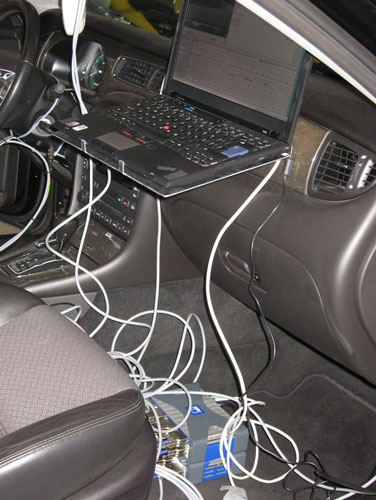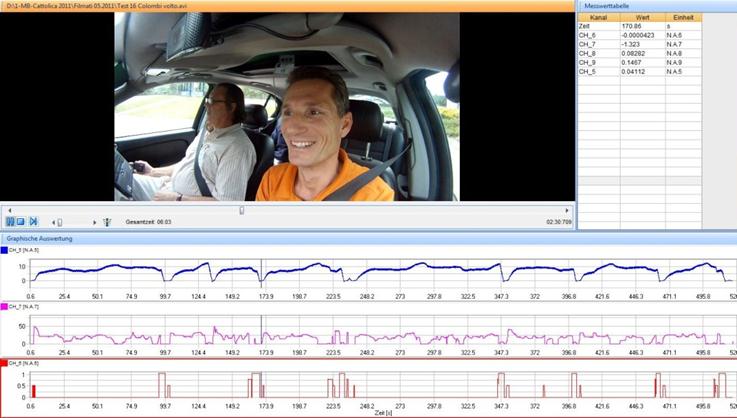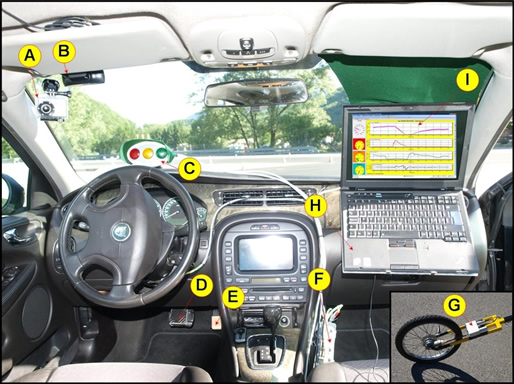The complexity of the measurement task was matched by the clear and well-defined demands that Mauro Balestra made of the measurement technology being used. It had to be reliable, easy to install, and suitable for tests in a moving vehicle. Which is why the engineer decided to deploy the entire HBM measurement chain. The U93 force transducer is used to record the force on the brake pedal, and a type WA displacement sensor is installed on the gas pedal of the vehicle.
Tacho-sensors and speed sensors from other manufacturers were also used, as well as video cameras to record the driver’s face muscles and the traffic situation.
Data acquisition is taken care of by a compact, universal QuantumX MX840A amplifier from HBM, mounted inside the test vehicle.
The PC’s Ethernet interface takes all the measurement data acquired by the QuantumX to the HBM measurement software, catman®AP. When they arrive, the data are not simply read in, they are also synchronized with the video footage from the passenger compartment.
It was not just its compact format that made the QuantumX the ideal choice, it was also the fact that it can be used with all current transducer technologies. Further plus points are its straightforward operation and the precision of the measurement data it collects. Because the transducers are fitted with the TEDS electronic data sheet, the QuantumX detects them automatically and they can be used for measurement immediately.
Simple to set up, professional in operation: whether on the move or integrating video files, the entire HBM measurement chain was always at its best. And revealing new discoveries to make driving in traffic safer.




